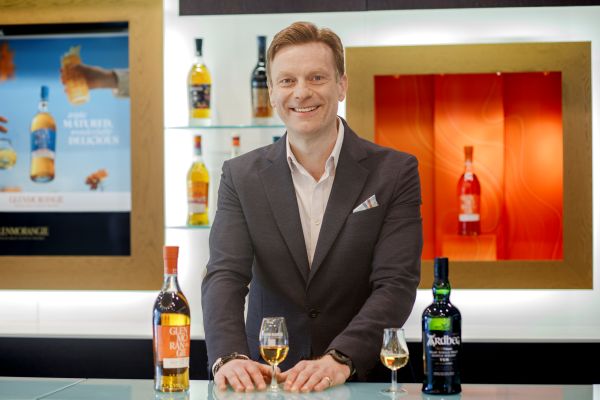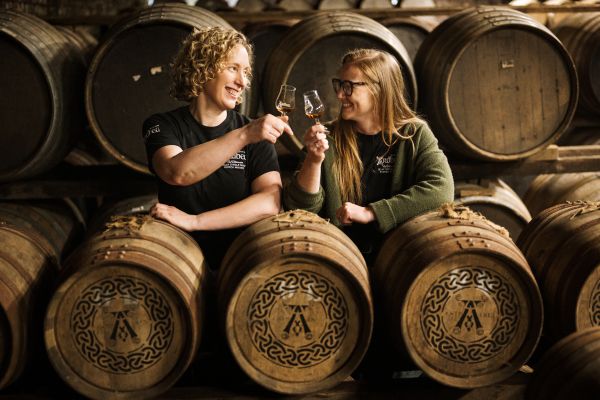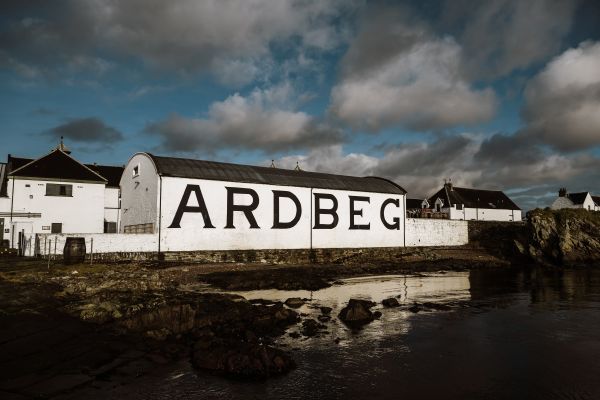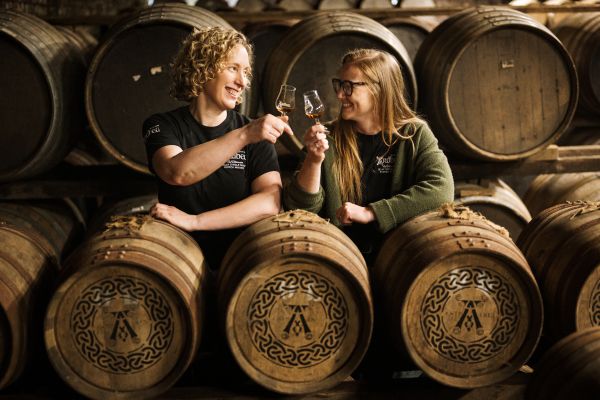Behind the Label – Ardbeg
Few whiskies inspire such a keen cult following as Ardbeg. It is the peatiest of whiskies from Islay, the very centre of what it calls the ‘smokiverse'. But how do owners LVMH recruit beyond this loyal fan-base wonders Tom Bruce-Gardyne …
"There's some weird stuff out there," it says on Ardbeg's website. And indeed there is, not least when it comes to pricing. Glenmorangie, then a stand-alone, quoted company but now part of LVMH, paid a mere £7.7 million for the Islay distillery and its whisky stocks in 1997. Twenty-five years later it sold a single cask of Ardbeg, distilled in 1975, to an Asian woman for £16m.
Glenmorangie's CEO, Caspar Macrae, won't divulge details of this barely credible private sale, except to say she was "very much an Ardbeg geek" and that £1m of the total was donated to the South Islay community fund. "I think it's really difficult to put prices on things that are genuinely unique," he says. "Ardbeg is within the top two or three most-collectible single malt whiskies at auction around the world."

He puts this down to it being "very niche, with very passionate fans" and to its "dearth of older stocks." The stills went cold in 1981 and when they were fired back to life in 1989, they were only in production for a few months a year under Allied Distillers which also owned Laphroaig next-door. Ardbeg was deemed surplus to requirements and narrowly escaped being bulldozed into history.
Instead, it was rescued by Glenmorangie who in 2000 set up a committee to protect it. "Today we have 200,000 members of the Ardbeg Committee – the fan club that was originally incorporated to make sure the doors of the distillery never closed again," says Macrae. "I think it's great. Because they've been fans for so long and feel personally attached to the brand, it keeps us on our toes."
Ardbeg has been called the geekiest of whiskies – a title he happily accepts, but not the idea that this might be off-putting when it comes to recruiting new consumers. "There's a differentiation between geeks and ‘knowledge bullies'," he maintains. "I love the infectious enthusiasm of geeks who have just got an incredible passion for these types of whiskies that are idiosyncratic, esoteric and made in unconventional ways."
By contrast, he describes ‘knowledge bullies' as out "to intimidate others with their expertise." In my experience, they are more often found in wine, whereas whisky geeks tend to be much friendlier, although to be one requires a lot of effort and dedication. The same may have been true of Real Ale whose taste was less of a barrier than its infamous ‘uniform' of beard, sandals and a beer belly.

While Glenmorangie is all about "a delicious whisky experience. At Ardbeg we're very conscious that some expressions people will hate," says Macrae. "We don't mind being a polarising whisky."
This is all down to the peat. "It is the smokiest malt whisky in the world," he declares. "At 55 parts per million, and above, that's exceptionally peaty, even for Islay." And yet he insists that it is a balanced whisky thanks to what is known as the ‘peaty paradox' – "the paradox is that it's not all smoky because it's got that wonderful sweetness."
"Ardbeg is very unlikely to be someone's first introduction to single malt whisky," he adds. But then people said the same thing about Lagavulin, and that didn't stop the actor Nick Offerman whose love at first sip, led him to becoming the face of the brand. Meanwhile Harrison Ford now struts his stuff for Glenmorangie.
What of Ardbeg? Could it do with a sprinkling of Hollywood star dust? "Well, there are no plans for a celebrity endorsement," he replies. "I think Ardbeg is a very different proposition from Glenmorangie. We would much rather it remains a bit of a personal voyage of discovery."

The nearest to a celebrity is probably Dr Bill Lumsden, the company's maverick head of distilling and whisky creation who plays the role of Dr Jekyll and Mr Hyde with the two distilleries. "There's no danger of what Dr Bill does on Glenmorangie competing or overlapping with Ardbeg," says Macrae.
The two brands are also very different in scale. While Glenmorangie is a top five-selling malt, Ardbeg is currently producing somewhat less than its 2.4m lpa capacity, because "we don't want supply to exceed demand," he says. "We want Ardbeg to remain a special treat for people." Its biggest market is Japan, followed by global travel retail and then Germany, France, the US and the UK.
In late September, the Ardbeg House hotel will open in Port Ellen to address "a longstanding need for us to extend our hospitality beyond our distillery," he says. It may also extend the whisky's appeal, but not as far as Glenmorangie, you would imagine. What about buying something to plug this yawning gap?
"Never say never," he replies. "We genuinely believe that we have the best Highland single malt in Glenmorangie, and the best Islay malt in Ardbeg. So, we'd have to be very selective about the thoughts of any acquisition." For some strange reason, Highland Park on Orkney pops into my head.

Award-winning drinks columnist and author Tom Bruce-Gardyne began his career in the wine trade, managing exports for a major Sicilian producer. Now freelance for 20 years, Tom has been a weekly columnist for The Herald and his books include The Scotch Whisky Book and most recently Scotch Whisky Treasures.
You can read more comment and analysis on the Scotch whisky industry by clicking on Whisky News.
